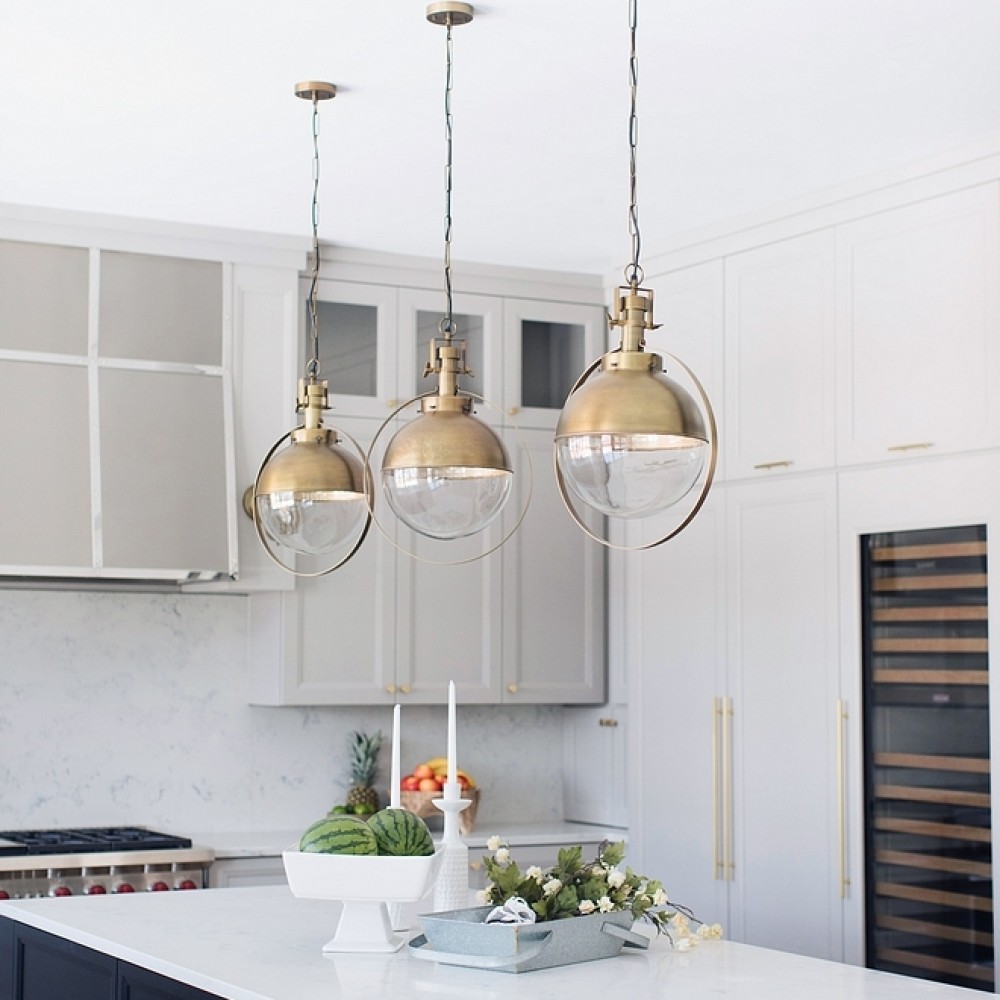

A focal point, a place to gather, a place to work, and in general, a highly functional space. A kitchen island must accommodate a number of needs—which means selecting the right lighting for the area can be a challenge. Between natural lighting and artificial, it's important to get the mix just right.
So without further adieu let's get into some basics that will help you make the best decisions when it comes to your island lighting.
Size and height matter. The size and placement of the light fixture you choose should trump over all the other decisions you are going to make regarding your kitchen island lighting. As a general rule of thumb, when hanging multiple pendants, the spacing will be determined by the diameter of the pendant. Ideally, you will want the space between each pendant to be the same as the width or diameter of each fixture. For example, if you have 18” pendants, the space between each fixture should ideally be 18”. When considering height of the light from the surface of the island, typically you would want to stay between the 30-36" range.
Don' think too small. In our eyes, the bigger the better - nothing is worse than tiny pendants, ones that look like they don't fit the space.
Quantity maters. When you are looking at how many lights you want above your island, less is always more when it comes to this. Typically 2 or 3 pendants will be just right, unless you have an abnormally large kitchen island, in which case more lights would be better.
Have enough wattage. Having a well lit kitchen island is a must. Whether you are using it for tasks or entertainment, if you aren't working with recessed lighting on top of your pendants use at least a 100-watt bulb in them for ample light, and if it's too much towards the evening hours consider installing a dimmer.
Mind your sight lines. It can be easy to forget this one and place a large pendant somewhere that it is covering up the statement range hood you put in. In this case, if it is inevitable, consider the fixture itself - could you change it to something like wire or glass that is opaque? The material that it is made out of in all cases is important to sign lines.
Take near by fixtures into consideration. While we are on the topic of choosing the right material for your pendants, it is important to choose based on the fixtures that are around them. Having your fixtures relate to each other is key in close quarters. Find one element, finish, shape or style you like for that space and match them. For example, if the light over your dining table has a modern element to it, the pendants above your kitchen island should carry that modern element over. They don't have to be sisters, just cousins.
Personal preference is paramount in the decision-making process, these are just some tips and tricks that might be helpful to you when you are making these tough decisions.